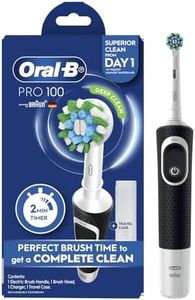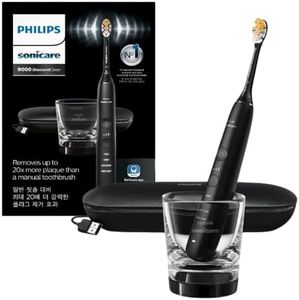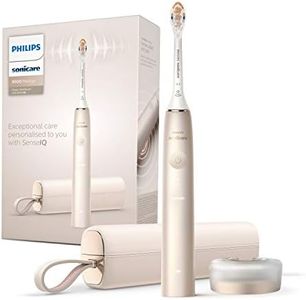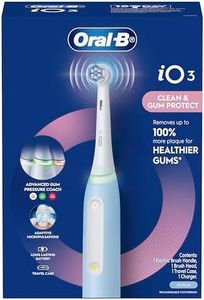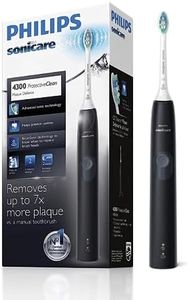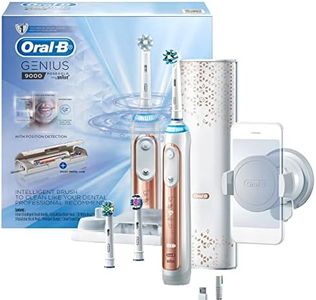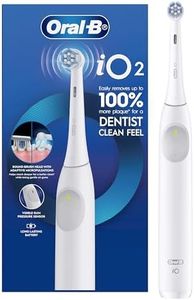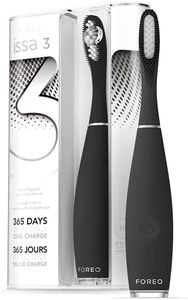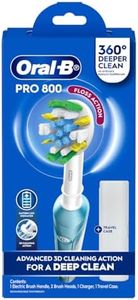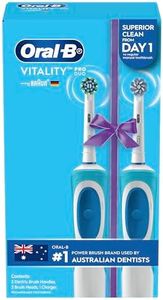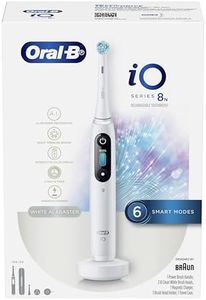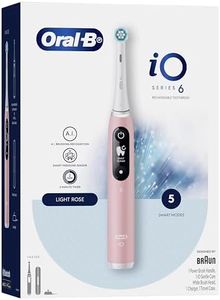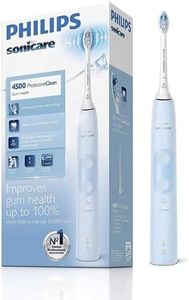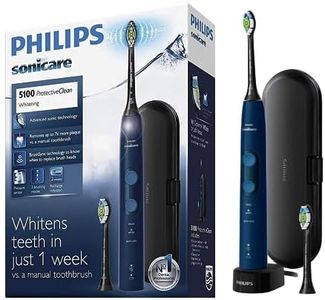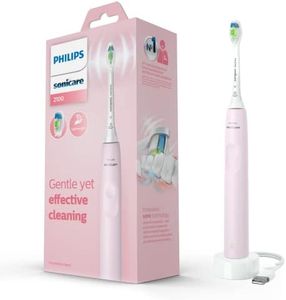We Use CookiesWe use cookies to enhance the security, performance,
functionality and for analytical and promotional activities. By continuing to browse this site you
are agreeing to our privacy policy
10 Best Electric Toothbrush For Seniors
From leading brands and best sellers available on the web.Buying Guide for the Best Electric Toothbrush For Seniors
Choosing the right electric toothbrush for seniors involves understanding their specific needs, such as ease of use, gentleness on gums, and features that make brushing teeth simpler and more effective. Seniors may face challenges with grip, manual dexterity, and sensitive teeth or gums, so it’s important to balance cleaning power with gentle care and user-friendly design. Think about how easy the toothbrush is to hold, whether it helps encourage proper brushing habits, and how it fits into daily routines.Brush Head TypeThe brush head type refers to the shape, size, and bristle arrangement of the toothbrush attachment. For seniors, a smaller brush head with soft bristles is usually best, as it can reach all areas in the mouth gently and effectively. Soft bristles protect sensitive gums and reduce the risk of abrasion or discomfort. If manual dexterity is limited, a rounded or compact brush head makes it easier to navigate tricky spots. Think about whether the user needs gentle yet thorough cleaning, and avoid large or hard-bristled heads.
Handle Design and GripHandle design determines how easy it is to hold and maneuver the toothbrush. For seniors, especially those with arthritis or weakness in their hands, a wider, rubberized handle can make a big difference in comfort and control. Slim or slippery handles might be harder to use. If grip is a concern, look for designs with ergonomic, non-slip features that provide stability during use. Testing the handle in your own hand or looking for models described as 'easy grip' can help match the comfort level needed.
Cleaning Modes and Intensity SettingsElectric toothbrushes can offer different cleaning modes, such as standard, sensitive, gum care, or whitening settings. Intensity settings allow users to adjust the strength of the vibrations or brushing action. For seniors, multiple modes aren’t always necessary, but having a gentle or sensitive mode is helpful for those with delicate gums, implants, or dental work. If you need basic cleaning, a simple one-mode brush is often enough, but if you want tailored care or have special dental needs, consider brushes with more settings.
Timer and Pacer FeaturesA timer helps users brush for the recommended two minutes, while a pacer prompts them to move to different areas of the mouth. This feature is important because it guides proper brushing habits and ensures a thorough clean without needing to keep track of time manually. If remembering to brush evenly or long enough is difficult, a built-in timer or quad-pacer is a helpful, hands-free solution. For those who are disciplined with habits, this may be less critical.
Battery Life and ChargingBattery life determines how often the toothbrush needs to be recharged. Some models use disposable batteries and others have built-in rechargeables. For convenience, a longer battery life (lasting several weeks) means less frequent charging, which is useful for seniors who may forget to charge often or travel occasionally. Charging stands or docks should be simple to use and not too fiddly. Consider how often the user wants to deal with charging and whether plug-in or battery-powered is more suitable.
Pressure SensorA pressure sensor alerts the user if they’re pressing too hard while brushing. This helps prevent gum damage and enamel wear, which can be particularly important for seniors with sensitive teeth or receding gums. The sensor can alert you with a light, sound, or by stopping the brush’s movement. If you tend to brush vigorously or worry about causing damage, choosing a toothbrush with a pressure sensor is beneficial. If you brush gently by habit, this may be a less crucial feature.
